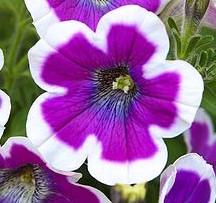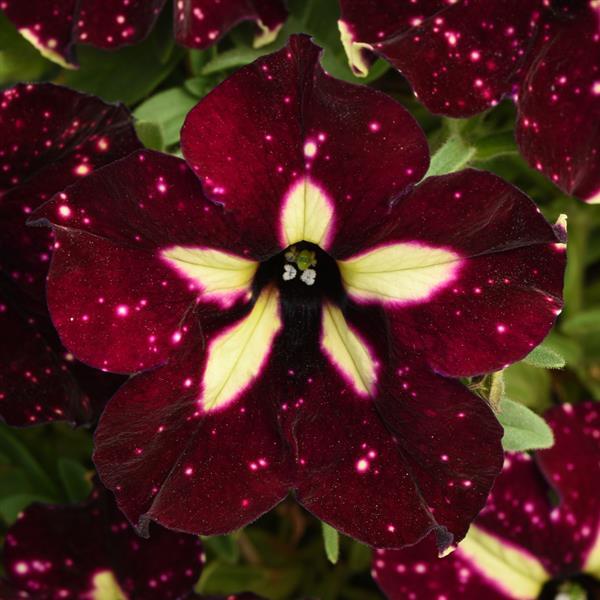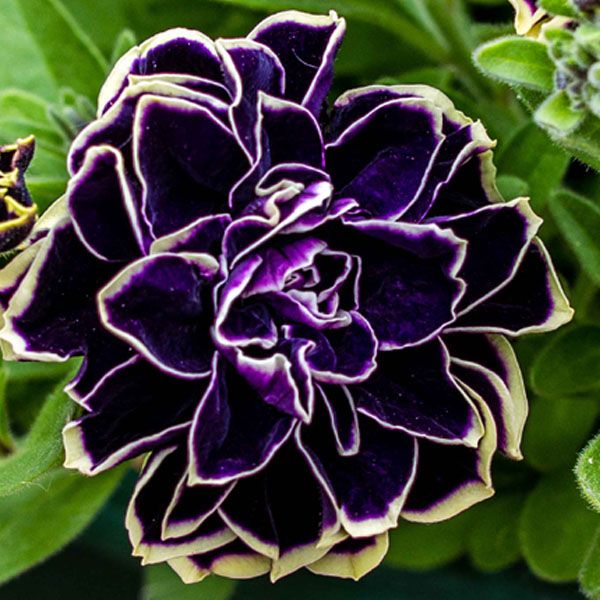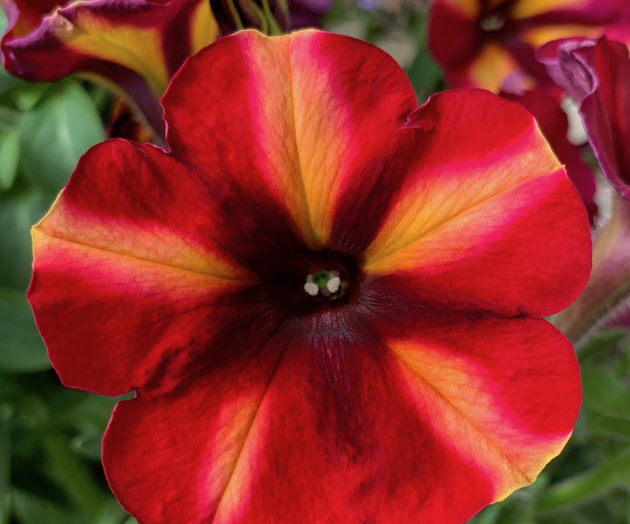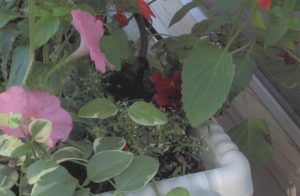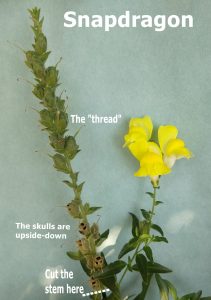Petunias are a staple in our annual gardens – fast growing, colorful, reliable and do well in both containers and garden beds. Have you ever wondered where Petunias came from?
Petunias are native to South America where purple petunias are often considered weeds in the farmers’ fields. In the early 1800’s, Napoleon sent a commission to South America to evaluate the resources and that commission sent samples of Petunia nyctaginiflora or “Night-scented Petunias” back to Paris in 1823. Nearly a decade later, in 1831, English botanist James Tweedie sent Petunia violacea to the Glasgow botanical gardens.
Interestingly, “petun” is the Brazilian word for “tobacco” – a plant which also grows wild in South America. Tobacco plants and petunia are both classified in the same family (Solanaceae), but they are not really that similar in appearance. Could the explorers have been confused by the native language?
Botanists eventually cataloged just 40 natural species of petunias. Since petunias breed, cross-pollinate and hybridize with ease, there are hundreds if not thousands of hybrids which give us a multitude of choices in color, pattern, bloom size, and growth habit.
Petunias grow easily from seed, but you will find more varieties at a nursery. After many years of production, some varieties are “established hybrid strains.” This means that you will get the same color and attributes from the seeds of the plant. Others are called “F1 hybrids” which can only reliably be propagated by stem cuttings — the seeds are unlikely to grow into similar plants. Before you set up a business growing petunias, be aware that hybrid plants, seeds and cuttings are often protected by growers under U.S. Patent laws. Be sure to take a moment to enjoy your petunias in the late evening. Like those first samples sent to Napoleon, many are still quite fragrant at night.
Fun new varieties of Petunias this year:
Caring for Your Petunitas
- Mid to late summer petunias become “leggy” or “spindly” and need to be cut back. A pair of sharp office scissors works great. Cut your plants in the early morning or in the evening to help prevent leaf scorch. You can remove 1/2 or more of each stem without harming the plant. Within a week, your plants will reward you with new blooms.
- Some of the F1 varieties I described above are sterile, producing no seed pods to cut off.
- Petunias bloom even more prolifically and get less “leggy” when fertilized regularly. See last month’s newsletter/blog post about fertilizing here. They also get long and spindly if they don’t have enough sunlight.
- Common pests for petunias are budworm caterpillars and aphids. Budworms can be controlled by manually picking them off and drowning them in saltwater or by using Bacillus thuringensis (Bt) which is a natural bacteria. Aphids can be removed from your plants with a jet of water from the hose although ladybugs and other natural . As a last resort, both pests can be controlled using carbaryl insecticide (brand name Sevin).
- Petunias are usually disease free plants.
Resources:
Crockett, James Underwood. The Time-Life Encyclopedia of Gardening: Annuals. New York: Time-Life, 1971. Print.
Ellis, Barbara W. Taylor’s Guide to Annuals: How to Select and Grow More than 400 Annuals, Biennials, and Tender Perennials. Boston: Houghton Mifflin, 1999. Print.
“Planttalk Colorado – Petunia.” Colorado State University Extension. 27 Oct. 2010. Web. 26 July 2011. <http://www.ext.colostate.edu/ptlk/1035.html>.
Wells, Diana. “Petunia.” 100 Flowers and How They Got Their Names. Chapel Hill, NC: Algonquin of Chapel Hill, 1997. 166-168. Print.


